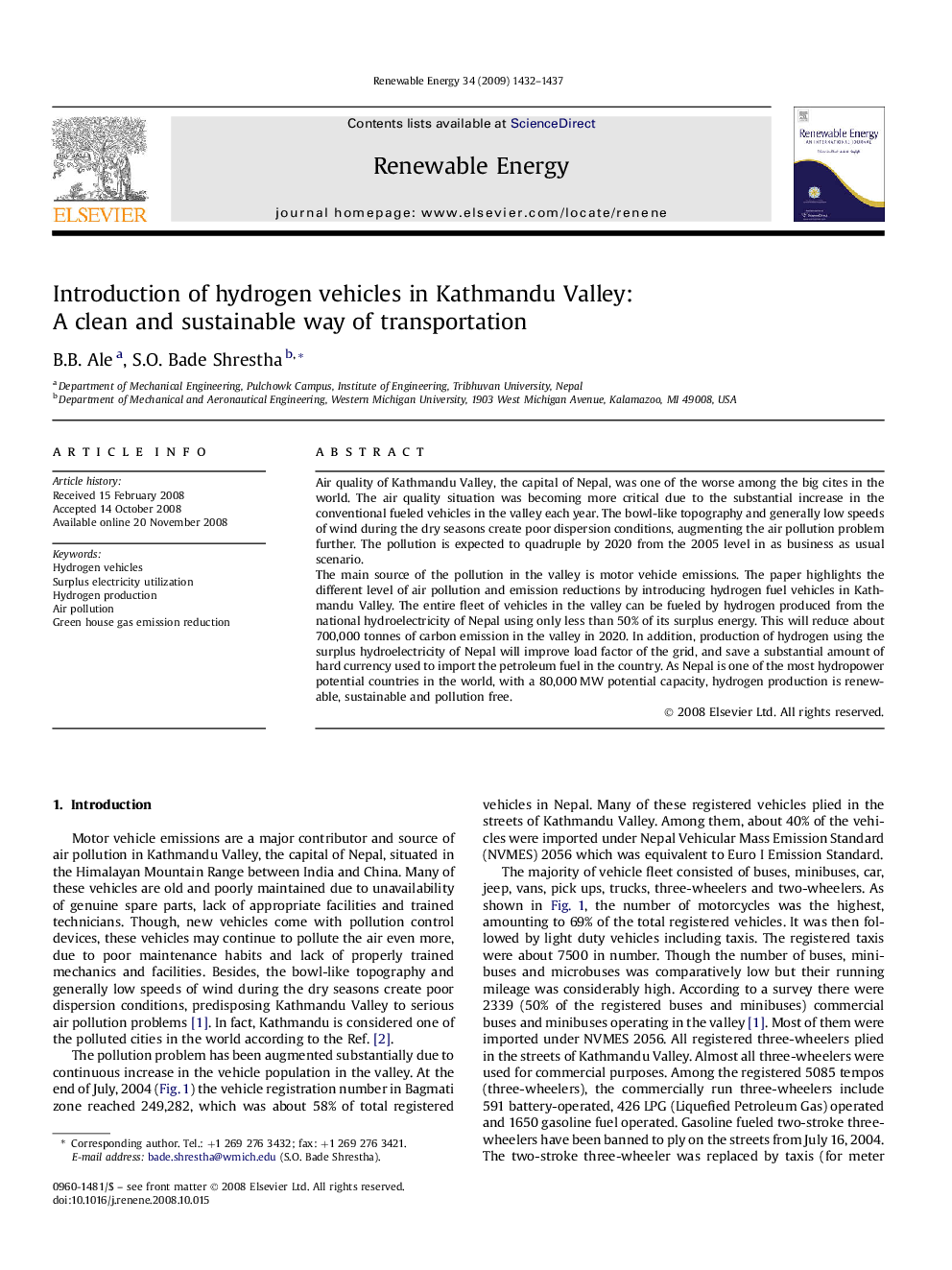| Article ID | Journal | Published Year | Pages | File Type |
|---|---|---|---|---|
| 302044 | Renewable Energy | 2009 | 6 Pages |
Air quality of Kathmandu Valley, the capital of Nepal, was one of the worse among the big cites in the world. The air quality situation was becoming more critical due to the substantial increase in the conventional fueled vehicles in the valley each year. The bowl-like topography and generally low speeds of wind during the dry seasons create poor dispersion conditions, augmenting the air pollution problem further. The pollution is expected to quadruple by 2020 from the 2005 level in as business as usual scenario.The main source of the pollution in the valley is motor vehicle emissions. The paper highlights the different level of air pollution and emission reductions by introducing hydrogen fuel vehicles in Kathmandu Valley. The entire fleet of vehicles in the valley can be fueled by hydrogen produced from the national hydroelectricity of Nepal using only less than 50% of its surplus energy. This will reduce about 700,000 tonnes of carbon emission in the valley in 2020. In addition, production of hydrogen using the surplus hydroelectricity of Nepal will improve load factor of the grid, and save a substantial amount of hard currency used to import the petroleum fuel in the country. As Nepal is one of the most hydropower potential countries in the world, with a 80,000 MW potential capacity, hydrogen production is renewable, sustainable and pollution free.
